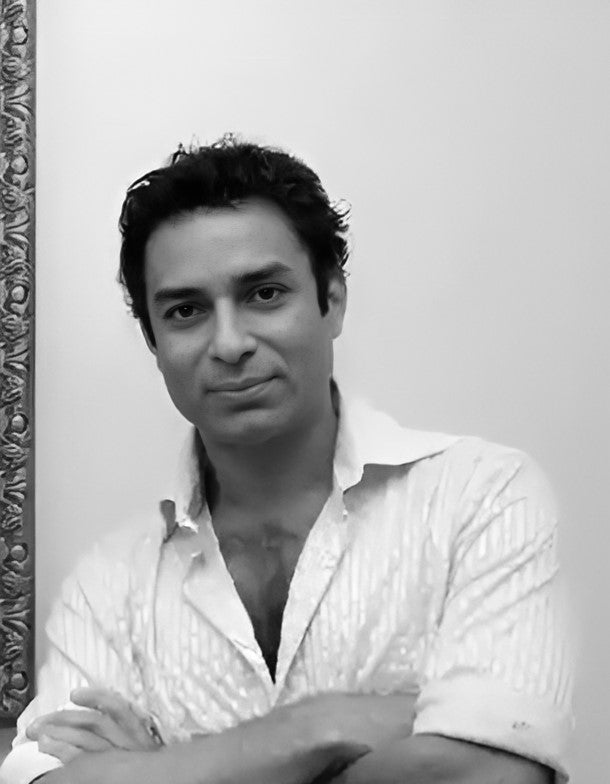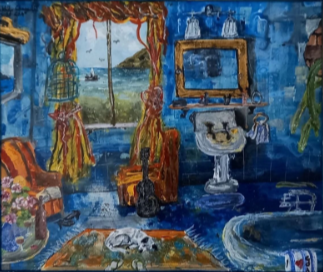
NIKHIL CHAGANLAL
Nikhil Chaganlal creates intimate, introspective paintings that function as visual journals, quiet interiors that hold memory, absence, and emotional residue. Describing them as “portraits of interiors,” he renders spaces not simply as architectural enclosures, but as charged psychological fields. Each room, chair, curtain, or shaft of light becomes a proxy for inner states, where solitude and recollection take on palpable form. His practice reveals a deep sensitivity to the intersection of physical and emotional space, where the past lingers not just as memory but as presence. Largely self-taught, Chaganlal's journey as an artist has been shaped more by life than by academic instruction. A difficult childhood, marked by emotional turbulence, continues to inform his visual language. His paintings bear witness to unresolved relationships and fractured identity, offering neither closure nor resolution but instead a lingering vulnerability. The interiors he paints, evocative of fading domestic elegance, carry the weight of personal history. They seem to breathe with the ghosts of former occupants or selves, quietly narrating a story of loss, longing, and the search for stability.
The materiality of Chaganlal’s work is central to its impact. He paints on Masonite panels using a hybrid technique that merges acrylics and oils with industrial chemical sealants drawn from fishing boat manufacture. The resulting surfaces are rich with contradiction, weathered yet durable, luminous yet subdued. This unusual approach imparts an aged patina, suggesting time’s slow erosion and the fragile layers of memory it leaves behind. The tension between surface and depth mirrors the emotional tone of the work itself, sensual yet restrained, exposed yet withheld. Chaganlal’s interiors are not passive backdrops; they hold a kind of psychological theatre. Objects, lamps, sofas, windows, are never merely props but stand-ins for emotional positions or spiritual thresholds. The figure is often absent, yet its presence is implied through the arrangement of space and the atmosphere it holds. Beneath the quiet surfaces lies a steady undercurrent of restlessness, a grappling with sexuality, displacement, and the desire for transcendence. His paintings reject spectacle in favor of emotional honesty, drawing viewers into private, contemplative worlds. Nikhil Chaganlal’s body of work continues to expand the expressive potential of space, where the interior becomes a site for memory, ritual, and quiet resilience.


